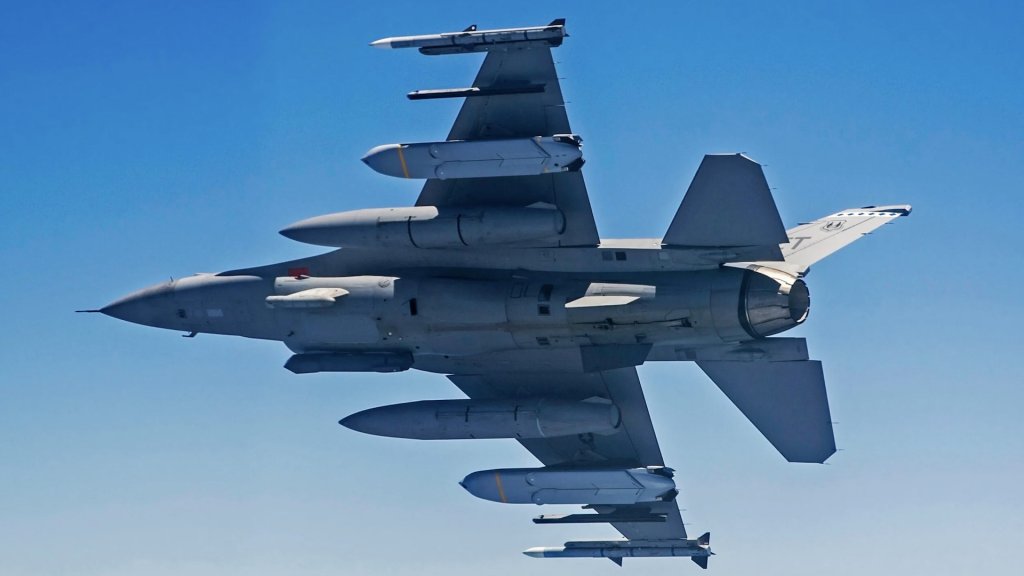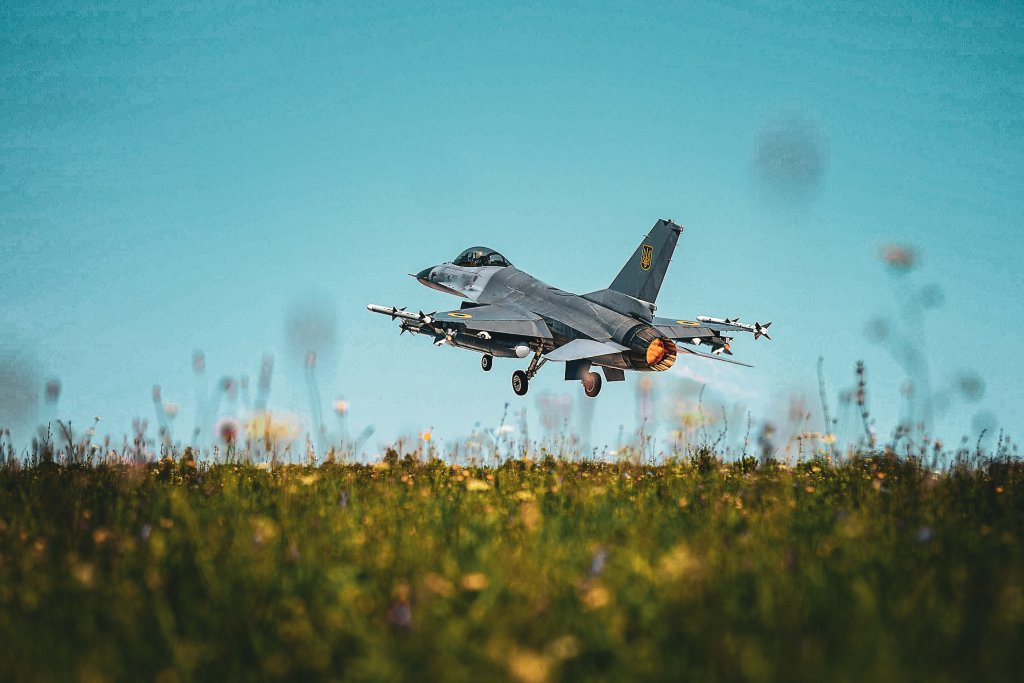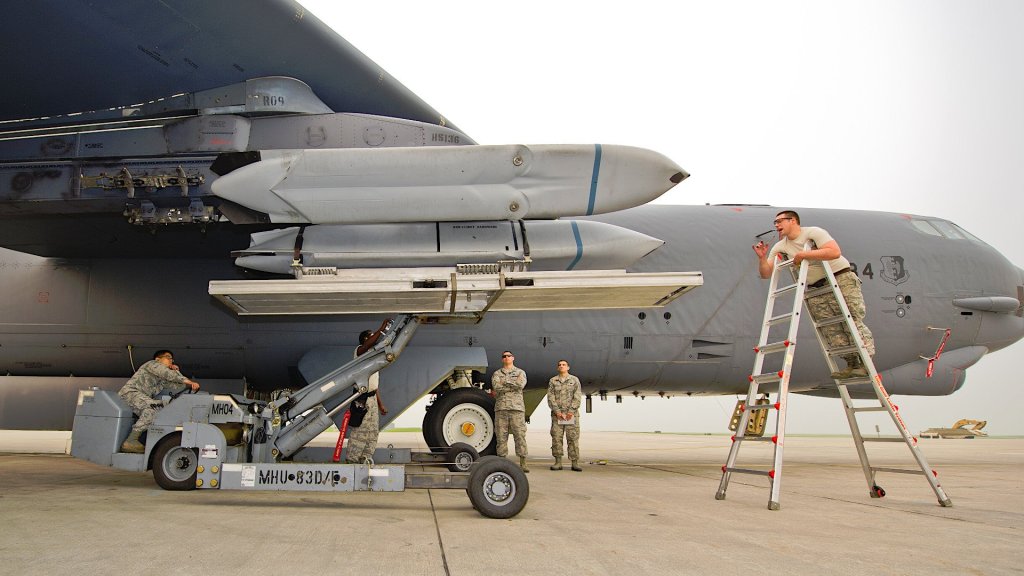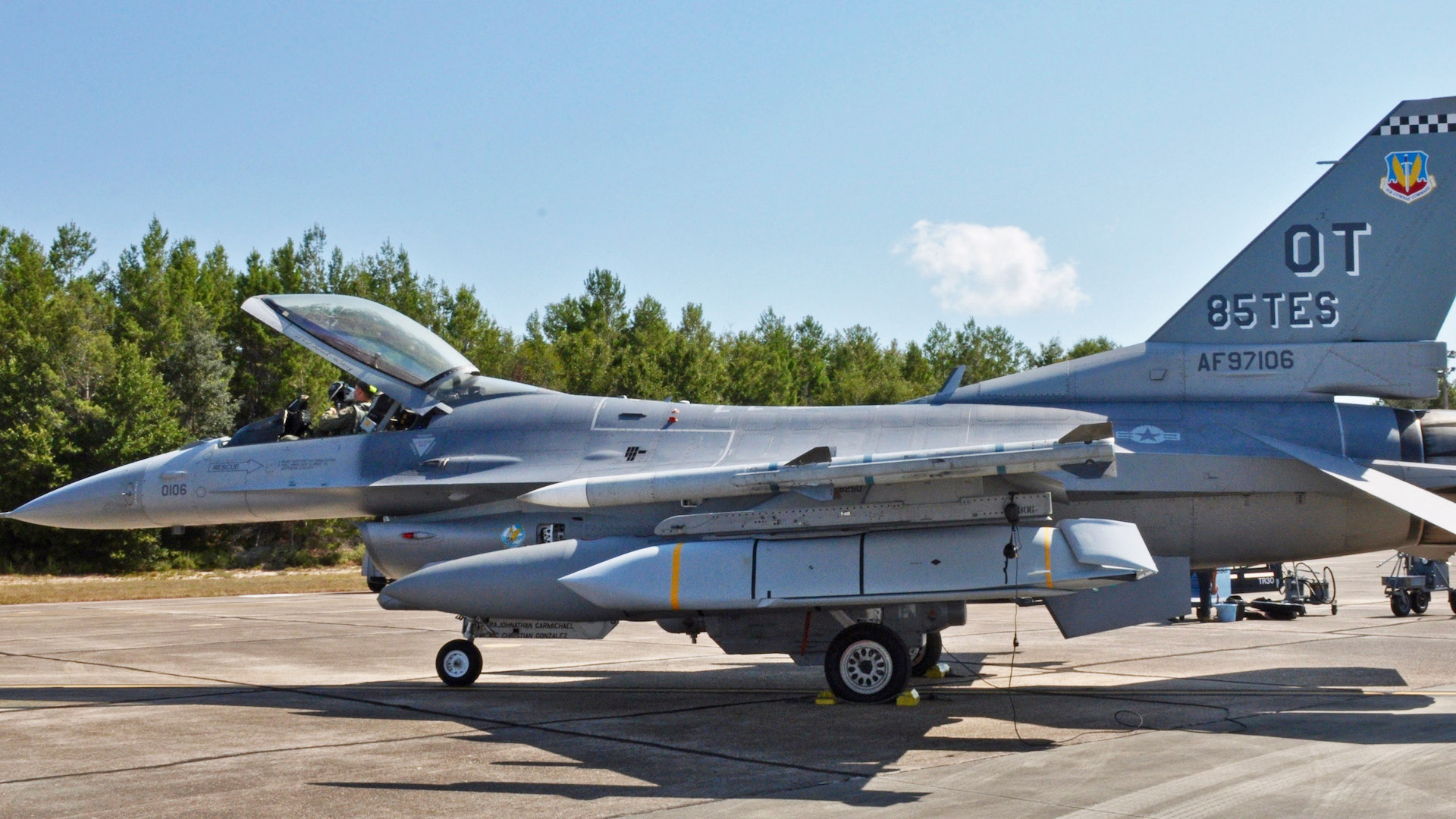The United States is reportedly “open” to providing Ukraine with the AGM-158 Joint Air-to-Surface Standoff Missile or JASSM, to arm its newly arrived F-16s, and which would provide a very powerful new long-range strike capability. The reports from Washington come around six months after Ukrainian officials stated that the country would receive an undisclosed type of air-launched cruise missile with a range of up to 300 miles for its F-16s.
Citing an unnamed official in the Biden administration, as well as two other people “familiar with internal deliberations,” Politico reported today that the U.S. government is considering whether to approve JASSM for Ukraine, but is open to the idea. Furthermore, the same sources confirm that the Pentagon is already working on how to integrate these missiles on Ukraine’s F-16s, which are upgraded older-model jets drawn from European NATO stocks.

U.S. Air Force photo by Staff Sgt. Brandi Hansen
The jets being supplied to Ukraine are to the F-16AM/BM standard, which has undergone the Mid-Life Update (MLU) program, although none of these currently employ JASSM. The only F-16 operators that today use the missile are the U.S. Air Force and Poland, operating more modern versions of the aircraft. It is likely the case that the MLU jets can accept the software needed to use JASSM, or already have it, but this may require activation or some associated hardware tweaks, which would probably be limited.
Although a final decision is reportedly yet to be made, the same Biden administration official states that the details of the transfer — including how to address the missile’s sensitive technologies — are now being worked out.

Although in service for some 20 years and already integrated on some F-16s, among other combat aircraft, JASSM is very much a high-end weapon and one that had, until now, been widely seen as less likely to be provided to Ukraine.
When the idea of transferring F-16s to Ukraine became a reality, we examined the weapons likely to be included, and judged that the JASSM was “the biggest wild card of them all.” This is on account of its complex and classified technologies, not least of which is its low-observable (stealth) characteristics that make it highly survivable, even against the latest air defense systems.
Transferring these weapons to Ukraine involves considerable technological risk, but it appears that officials are now very much considering whether that risk is worthwhile.

www.twz.com
As well as the possibility of JASSMs, or their wreckage, ending up in Russian hands, there’s also the issue of the missile’s relatively very long range.
In its initial AGM-158A form, the JASSM has a range of around 330 miles and weighs 2,250 pounds. The extended-range AGM-158B variant, or JASSM-ER, has a publicly stated range of at least 575 miles. An even longer-range version of the JASSM is in the works, but this has not been fielded yet by the U.S. military.
Powered by a small turbojet engine, JASSM uses an inertial navigation system (INS) and GPS to find its intended target, with an imaging infrared with automatic target recognition used to ensure a high level of accuracy on the run-in to the target. The missile is designed to operate in heavily degraded GPS environments, which would be particularly relevant in Ukraine, where Russia employs intense GPS jamming, including to degrade Ukrainian-guided weapons. JASSM carries a dual-mode blast-fragmentation/penetrator warhead in the 1,000-pound class.

Were the United States to provide Ukraine with JASSM, there would be a big question as to whether it would be permitted for use against targets within Russia’s borders. That question is thrown into sharper focus by the Ukrainian push into Russia’s Kursk region, which is now entering its second week.
For missions inside Ukraine’s borders, the weapon’s range is far in excess of the country’s needs, although this could potentially be altered to address this.

While Western sources have generally discounted the possibility of supplying JASSM to Ukraine, officials in that country have struck a more optimistic tone.
Back in February, Lt. Gen. Serhii Naev, the commander of the Joint Forces of the Armed Forces of Ukraine, said that the country’s F-16s would receive an undisclosed type of air-launched cruise missile with a range of “300-500 kilometers” — 186 to 310 miles. Naev added that the weapons were expected to arrive in “further military aid packages,” but provided no more details. As we explored at the time, JASSM seemed to be the most likely candidate, based on this description.
Last month, a Ukrainian delegation visited Washington, reportedly with a specific request to approve the transfer of JASSM. That visit is said to have led to the issue reaching the desk of National Security Adviser Jake Sullivan.
Meanwhile, in some U.S. political circles, there is growing support for giving Ukraine longer-range weapons and relaxing restrictions on their use.

For example, a group of pro-Ukraine U.S. lawmakers is calling upon the administration to permit Ukraine to launch U.S.-supplied weapons deeper into Russian territory, especially in support of the new Kursk offensive.
Should Washington be poised to hand JASSM over to Ukraine, the missile, even if supplied in its oldest form, would be a huge leap in capability for the country. In particular, it would be especially effective for deeply penetrating the dense Russian air defense overlay that sits atop occupied territories in Ukraine.
It would also not be the first time that an item of high-end weaponry was provided to Ukraine after a policy about-turn. That applies to the U.S.-supplied M1 Abrams tanks, Patriot air defense systems, and the Army Tactical Missile Systems (ATACMS), as well as the F-16 itself.
Meanwhile, other long-range cruise missiles have been delivered to Ukraine already, namely the U.K.-supplied Storm Shadow, and the similar French-supplied SCALP EG cruise missiles. Both have already been used to significant effect, launched by Ukrainian Su-24 Fencer strike aircraft, although stocks are limited and the JASSM may well also be required simply to keep the Ukrainian Air Force stocked with cruise missiles.

A Ukrainian Su-24 carrying a SCALP-EG cruise missile. Ukrainian Ministry of Defense
The Storm Shadow/SCALP-EG export configurations have a range of around 155 miles, while the non-export configurations are roughly double that, putting them in broadly the same class as JASSM. Neither of those European-supplied cruise missiles is currently permitted for use against targets deep within Russia.
There is also the question of how long it would take to get JASSM operational with the Ukrainian Air Force’s newly arrived F-16s. While reports suggest that studies, at least, into the integration of this missile onto Ukrainian F-16s are already underway, it would also take some significant time for pilots and maintainers to be trained to use it. At the same time, JASSM requires a significant backend infrastructure for planning missions, which in turn requires weaponeering training. Mission planning is a critical factor for JASSM, with the latest threat information needed to give it the best chance of surviving as it flies through a heavily defended area.
So far, Ukrainian F-16s have only been seen with air-to-air load-outs, with the likelihood that air defense missions will be mastered first, before adding offensive capabilities.
With Ukraine long having sought weapons with more reach, to attack high-value Russian targets like air defense systems, command posts, logistic storage sites, air defenses, and docked vessels, JASSM would be a welcome addition to its armory, as it seeks to target objectives further from the front lines.
It’s unclear at this point if Washington will decide to provide Ukraine with AGM-158s, but today’s reports are, at the very least, the strongest indication yet that the issue is very much under discussion, and JASSM-armed Ukrainian F-16s are becoming closer to reality.
Contact the author: thomas@thewarzone.com
